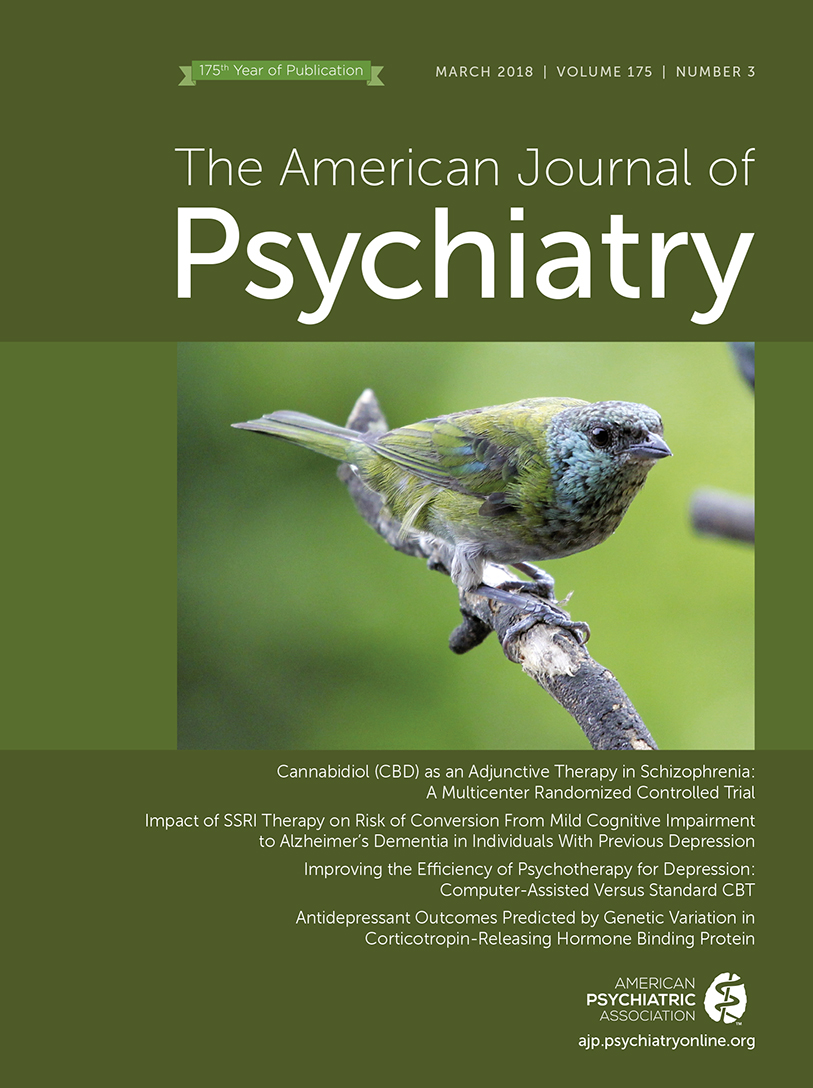Understanding Pregnancy’s Protective Effect on Drug Use Within a Developmental Framework
To the Editor: In the article by Kendler et al. (1), published in the October 2017 issue of the Journal, the authors analyzed Sweden’s national health registry data on nearly 150,000 women to examine pregnancy status in relation to drug use patterns, accounting for demographic, heritable, partner-related, and unmeasured individual-level confounding effects. Viewed as a natural intervention, the impact of pregnancy on drug use rivaled the effects of financial incentive–based (contingency management) interventions. Strikingly, this impact was equal, if not greater, in women with higher baseline risk factors for prenatal drug use (as shown in Table 2 in the article). The authors describe the mothers’ intrinsic motivation to protect their developing children by suspending drug use as evidence for the limitations of an exclusively brain-based view of drug abuse.
We present an expanded interpretation of the findings—one that incorporates brain-based models of addiction. Health-related behaviors of pregnant women can also be understood developmentally within a caregiving framework (2, 3). Maternal motivation to protect the fetus against drug exposure could be facilitated by highly evolutionarily conserved processes first described in mammalian species and increasingly characterized in human parental and nonparental contexts (4). These neurobiological models could be highly relevant for understanding why pregnancy confers a protective effect.
The study by Kendler and colleagues also has broader implications beyond the perinatal context. The ways that drug use and associated neuroadaptations may interrupt social and interpersonal processes have received significant attention (5). The findings from this study, together with prospective investigations that employ biomarker-verified reports of cessation during pregnancy (6, 7), now provide compelling evidence that social processes related to maternal caregiving can also interrupt addictive processes. In this way, the protective effect of pregnancy on drug use convincingly demonstrated in this study is a unique paradigm of how social and interpersonal processes can positively and powerfully influence addictive behaviors. This is encouraging because more effective and durable solutions to the treatment of substance use disorders are sorely needed.
1 : The protective effect of pregnancy on risk for drug abuse: a population, co-relative, co-spouse, and within-individual analysis. Am J Psychiatry 2017; 174:954–962Link, Google Scholar
2 : Specification of change mechanisms in pregnant smokers for malleable target identification: a novel approach to a tenacious public health problem. Front Public Health 2017; 5:239Crossref, Medline, Google Scholar
3 : The neurobiology of mammalian parenting and the biosocial context of human caregiving. Horm Behav 2016; 77:3–17Crossref, Medline, Google Scholar
4 : Maternal self concept as a provider and cessation of substance use during pregnancy. Addict Behav 2012; 37:956–961Crossref, Medline, Google Scholar
5 : Addiction: pulling at the neural threads of social behaviors. Neuron 2011; 69:599–602Crossref, Medline, Google Scholar
6 : Preliminary evidence for the interaction of the oxytocin receptor gene (OXTR) and face processing in differentiating prenatal smoking patterns. Neurosci Lett 2015; 584:259–264Crossref, Medline, Google Scholar
7 : Maternal-fetal attachment differentiates patterns of prenatal smoking and exposure. Addict Behav 2015; 45:51–56Crossref, Medline, Google Scholar



